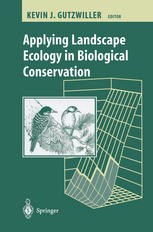

Most ebook files are in PDF format, so you can easily read them using various software such as Foxit Reader or directly on the Google Chrome browser.
Some ebook files are released by publishers in other formats such as .awz, .mobi, .epub, .fb2, etc. You may need to install specific software to read these formats on mobile/PC, such as Calibre.
Please read the tutorial at this link: https://ebookbell.com/faq
We offer FREE conversion to the popular formats you request; however, this may take some time. Therefore, right after payment, please email us, and we will try to provide the service as quickly as possible.
For some exceptional file formats or broken links (if any), please refrain from opening any disputes. Instead, email us first, and we will try to assist within a maximum of 6 hours.
EbookBell Team

4.3
58 reviewsLandscape ecology and conservation biology are rapidly developing disciplines, and a current synthesis of principles and applications in these two fields is needed under one cover. Many managers are not applying principles of landscape ecology in efforts to conserve biota, yet the loss of biological diversity could be reduced if broad-scale processes and patterns were consistently considered in management and conservation decisions. Bringing together insights from leaders in landscape ecology and conservation biology, this book explains how our knowledge about landscape ecology can help us understand, manage and maintain biodiversity. Beyond explaining pertinent concepts of landscape ecology and biological conservation and describing examples of their use in management, research and planning, this book also distills principles for applying landscape ecology in conservation, identifies gaps in current knowledge and provides research approaches to fill those voids. The book is divided into five parts: the first part introduces the book and discusses what landscape ecology is and why it is important to biological conservation. The second deals with multiple scales, connectivity and organism movement. The third part discusses landscape change and how this affects biodiversity, and the fourth part covers conservation planning. The final part presents a synthesis that identifies overarching principles, pervasive constraints and realistic prospects for applying landscape ecology in biological conservation. Conservationists, land-use planners, and ecologists will find this book to be an essential resource. Foreword by Richard T.T. Forman.